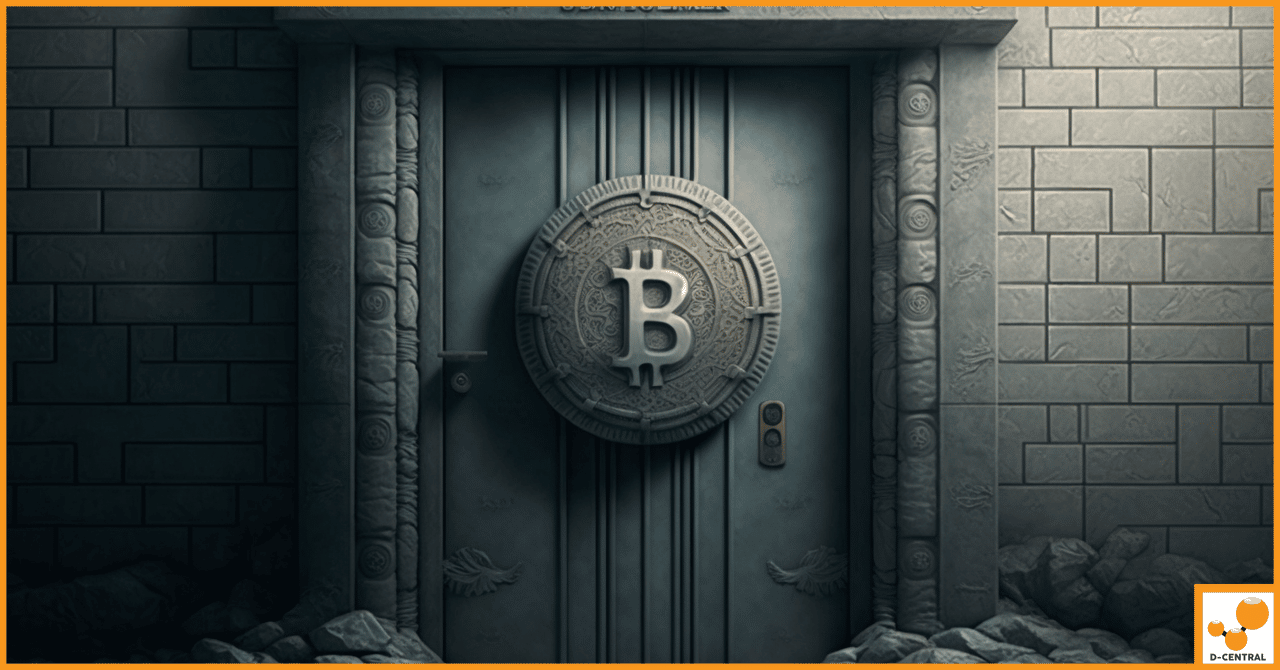
Is There an Actual Chance for Solo Miners in the Bitcoin Landscape?
In the vast digital realm of cryptocurrencies, Bitcoin stands as the pioneering force that ushered in a new era of
4479 Desserte Nord Autoroute 440, Laval, QC H7P 6E2

In the ever-evolving landscape of digital currencies, Bitcoin stands as a pioneering force, having ushered in a new era of decentralized finance. Since its inception in 2009, Bitcoin has not only revolutionized the way we perceive and interact with money but has also laid the foundation for an entire ecosystem of cryptocurrencies. At the heart of Bitcoin’s groundbreaking technology is a complex yet fascinating interplay of economic incentives and strategic decision-making, a concept known as game theory.
Game theory, in its essence, is the study of strategic interactions among rational decision-makers. In the world of Bitcoin, it becomes a crucial tool for understanding and predicting the behaviours of various participants in the network, including miners, developers, and users. The application of game theory in Bitcoin goes beyond mere academic interest; it is the bedrock upon which the security, functionality, and trustworthiness of the cryptocurrency are built.
Our exploration into Bitcoin’s game theory is not just an academic exercise; it is a journey into the core mechanisms that make Bitcoin a self-sustaining and resilient digital currency. This article aims to unravel the intricate tapestry of strategies, incentives, and protocols that underpin Bitcoin’s functionality and success. By delving into the depths of game theory in the context of Bitcoin, we uncover not only the genius of its design but also the potential and challenges that lie ahead in the ever-expanding universe of cryptocurrencies.
Game theory is a branch of mathematics and economics that studies the strategic interactions between rational decision-makers. It is a framework for understanding and modeling scenarios where the outcome for each participant depends not only on their own decisions but also on the decisions made by others. In essence, game theory analyzes how individuals make choices under conditions of uncertainty and interdependence.
At its core, game theory involves games of strategy, not of chance, and these games can be cooperative or non-cooperative. In cooperative games, players can form alliances and work together to achieve a common goal, while in non-cooperative games, each player acts independently, often in competition with others. The outcomes in game theory are known as equilibria, with the Nash Equilibrium being one of the most prominent concepts, where no player can benefit by unilaterally changing their strategy if the strategies of others remain unchanged.
Historical Context: The Evolution of Game Theory in Economics and Strategic Planning
The formal study of game theory began in the early 20th century, but it was John von Neumann and Oskar Morgenstern’s 1944 book, “Theory of Games and Economic Behavior,” that established game theory as a unique field of study. Initially used in economics to understand markets and consumer behaviour, game theory soon found applications in various fields, including biology, politics, and computer science.
In economics, game theory has been used to analyze competition and cooperation between businesses, market dynamics, and the allocation of resources. In strategic planning, it helps in decision-making processes, especially in scenarios involving competing interests or negotiation.
Relevance of Game Theory in Decentralized Systems like Bitcoin
In the context of decentralized systems like Bitcoin, game theory plays a pivotal role. Bitcoin’s blockchain technology is essentially a decentralized ledger that relies on the consensus of its participants, who are incentivized to act honestly for the system to function effectively. Game theory in Bitcoin is used to model the behaviour of various actors in the network, particularly miners who validate transactions and maintain the blockchain.
The decentralized nature of Bitcoin means that no single entity has control over the entire system. This is where game theory becomes crucial – it ensures that despite the lack of central authority, the system remains secure and functional. By understanding the strategic interactions and incentives of participants, Bitcoin is designed in such a way that it encourages cooperation, honesty, and rational behaviour. This alignment of incentives is what makes Bitcoin resilient to fraud and attacks, and ensures its integrity as a decentralized digital currency.
In summary, game theory is not just an academic tool; it is the backbone of strategic decision-making in various fields, especially in decentralized systems like Bitcoin. Its principles help ensure that despite the absence of centralized control, systems can operate efficiently, securely, and predictably based on the rational behaviour of their participants.
Bitcoin, the first and most renowned cryptocurrency, operates on a decentralized network. This means it is not controlled by any single entity or central authority, such as a government or bank. Instead, its foundation lies in blockchain technology – a distributed ledger that records all transactions across a network of computers. This ledger is public, transparent, and immutable, meaning once a transaction is recorded, it cannot be altered or deleted. This decentralization is key to Bitcoin’s appeal, offering a level of security and autonomy not found in traditional, centralized financial systems.
Explanation of How Bitcoin Uses Game Theory Principles
Bitcoin’s functionality and security are deeply rooted in game theory principles. The system is ingeniously designed so that the interests of various participants, particularly miners, are aligned with the overall health and security of the network. Miners, who use computational power to validate transactions and add them to the blockchain, are incentivized through rewards (newly minted bitcoins) and transaction fees.
Game theory in Bitcoin ensures that despite the lack of a central authority, the system remains secure and transactions are verified truthfully. Miners are encouraged to follow the protocol’s rules; deviating from them would mean losing out on potential rewards, as only valid and verified transactions are accepted by the network. This creates a trustless environment where participants are motivated to act in the network’s best interest, even if their primary goal is personal gain.
Key Concepts: Nash Equilibrium, Miners’ Dilemma, and Proof of Work
The application of game theory principles in Bitcoin is fundamental to its operation. It ensures that the decentralized network functions efficiently, securely, and reliably, with all participants incentivized to maintain the integrity and trustworthiness of the system.
In the Bitcoin network, miners play a crucial role in maintaining the blockchain’s integrity and security. They are responsible for validating new transactions and adding them to the blockchain. This process involves solving complex cryptographic puzzles, a task that requires significant computational power and energy. The decision-making process of miners is influenced by various factors, including the cost of electricity, the efficiency of their mining hardware, and the current price of Bitcoin.
Miners must decide whether to invest in more powerful equipment, join mining pools to increase their chances of earning rewards, or even which transactions to include in the blocks they mine. These decisions are strategic and are influenced by the potential rewards they can earn and the costs they incur.
Incentives and Rewards in Bitcoin Mining
The primary incentive for miners in the Bitcoin network is the reward system. When a miner successfully adds a block to the blockchain, they are rewarded with a certain number of bitcoins (known as the block reward) and the transaction fees from the transactions included in that block. This reward system motivates miners to contribute their computational power to the network.
However, the rewards are not guaranteed. The Bitcoin protocol operates on a Proof of Work (PoW) system, meaning that the miner who first solves the cryptographic puzzle gets the reward. This creates a competitive environment where miners are incentivized to continuously improve their computing power and efficiency.
How Game Theory Ensures Honesty and Cooperation Among Participants
Game theory plays a vital role in ensuring honesty and cooperation among participants in the Bitcoin network. The concept of Nash Equilibrium applies here; for a miner, the best strategy is to play by the rules of the network, as deviating from them (e.g., by attempting to add invalid transactions to a block) would not be beneficial. If a miner were to act dishonestly, their block would be rejected by other participants in the network, leading to a waste of computational resources and electricity without gaining any reward.
Furthermore, the concept of the Miners’ Dilemma comes into play. While miners could theoretically collude to attack the network (e.g., by executing a 51% attack), doing so would undermine the value of Bitcoin itself, reducing the worth of any rewards they could gain from such an attack. This self-regulating mechanism, where the best interest of individual miners aligns with the health and security of the overall network, is a brilliant application of game theory in a decentralized system.
In summary, strategic interactions in the Bitcoin network, guided by game theory principles, create a system where miners are incentivized to act honestly and contribute positively to the network. This not only ensures the security and integrity of the blockchain but also fosters a cooperative environment despite the absence of a central authority.
The security of the Bitcoin network is paramount, and game theory plays a critical role in safeguarding it against various potential attacks. One of the most discussed threats is the 51% attack, where an entity gains control of more than half of the network’s mining power, potentially allowing them to double-spend coins and prevent other miners from completing blocks. However, game theory principles make such attacks economically unfeasible. The cost of acquiring and running the necessary computing power to execute a 51% attack is immense, and the potential gains are uncertain, especially considering that a successful attack would undermine the trust in Bitcoin, consequently devaluing the attacker’s reward.
Another potential threat is the ‘selfish mining’ strategy, where miners keep new blocks secret instead of broadcasting them to the network, giving them a head start on the next block. Game theory comes into play here as well, as the Bitcoin protocol incentivizes miners to share their new blocks immediately. By doing so, they collect transaction fees and block rewards, whereas withholding blocks carries the risk of other miners finding the next block first, rendering the selfish miner’s efforts and resources wasted.
The Concept of Byzantine Fault Tolerance in Bitcoin
Byzantine Fault Tolerance (BFT) is a property of computer systems that can continue operating correctly even in the presence of faulty or malicious components. In the context of Bitcoin, BFT refers to the network’s ability to reach consensus and continue operations even if some miners act maliciously or are unreliable. The decentralized and transparent nature of the Bitcoin blockchain, combined with the consensus mechanism (Proof of Work), ensures that all transactions are verified and agreed upon by the majority of the network, thus providing resilience against Byzantine faults.
Game theory significantly influences the behaviour of investors and users within the Bitcoin ecosystem. The decentralized nature of Bitcoin, combined with its limited supply, creates a unique economic environment where the actions of each participant can have a direct impact on the market. Investors, understanding the scarcity of Bitcoin, are often driven by a ‘game’ of supply and demand. The knowledge that others are likely to continue buying Bitcoin in anticipation of future value increases can create a self-fulfilling prophecy, encouraging more people to invest.
Moreover, the strategic interactions among miners, traders, and holders play a crucial role in shaping market dynamics. For instance, the decision of miners to sell or hold their Bitcoin rewards can influence the market supply, thereby affecting the price. Users and investors, aware of these dynamics, make strategic decisions based on the expected actions of others, which is a fundamental concept of game theory.
The Role of Game Theory in Bitcoin’s Price Stability and Growth
Game theory contributes to Bitcoin’s price stability and growth through its influence on miners’ behaviour and the network’s security. The balance between the cost of mining (including energy and hardware expenses) and the rewards (block rewards and transaction fees) creates an equilibrium. This equilibrium helps in stabilizing the price of Bitcoin to an extent, as drastic drops in value would deter miners, reducing the network’s computational power and security, and thereby discouraging investment.
Additionally, the halving events in Bitcoin (where the block reward for miners is halved approximately every four years) are a game-theoretic mechanism to control inflation and influence the supply of Bitcoin. These events are typically accompanied by increased public interest and speculation, often leading to a rise in price and adoption as investors anticipate a reduction in supply.
Future Implications: Game Theory in the Evolution of Bitcoin and Other Cryptocurrencies
As Bitcoin and other cryptocurrencies evolve, game theory will continue to play a critical role in their development and adoption. The principles of game theory could be applied to design more efficient consensus mechanisms, improve scalability solutions, and enhance security features. For emerging cryptocurrencies, understanding and implementing game-theoretic models can be crucial in building trust and encouraging adoption.
Furthermore, as the cryptocurrency market becomes more intertwined with traditional financial systems, the strategic interactions between these two domains will likely become more complex and influential. Game theory could provide valuable insights into how these interactions might unfold, influencing regulatory approaches, institutional adoption, and the integration of cryptocurrencies into broader economic systems.
In exploring the intricate relationship between Bitcoin and game theory, we have uncovered the fundamental mechanisms that not only sustain but also enhance the functionality, security, and appeal of this pioneering cryptocurrency. Game theory, with its focus on strategic decision-making and behavioral analysis, is deeply woven into the fabric of Bitcoin, influencing everything from miner incentives to investor behaviour.
The role of miners, pivotal to Bitcoin’s network, is heavily influenced by game-theoretic principles, balancing the costs and rewards of mining. This delicate equilibrium ensures the security and efficiency of the Bitcoin network, making it resilient to various potential threats. Game theory’s application extends beyond the technical aspects, significantly shaping the market dynamics of Bitcoin. It influences investor and user behaviour, contributing to the cryptocurrency’s price stability and growth. This interplay between strategic decision-making and market outcomes highlights the profound impact of game theory on Bitcoin’s adoption and valuation.
As we look towards the future, the role of game theory in Bitcoin’s evolution becomes even more pronounced. It will continue to be a crucial tool in addressing emerging challenges and unlocking new opportunities within the cryptocurrency landscape. The principles of game theory could lead to the development of more efficient consensus mechanisms, enhanced security features, and better scalability solutions for Bitcoin and other digital currencies.
In conclusion, understanding the principles of game theory is essential for anyone looking to grasp the complexities of Bitcoin. Its application offers valuable insights into the strategic interactions that underpin the world’s first decentralized digital currency. For those intrigued by the fascinating interplay between game theory and Bitcoin, D-Central Technologies offers a wealth of resources and expertise. We encourage readers to delve deeper into this subject and explore the myriad ways in which game theory continues to shape the world of cryptocurrency. Visit D-Central Technologies to embark on this enlightening journey and discover more about the innovative world of Bitcoin and blockchain technology.
What is game theory and its relevance to Bitcoin?
Game theory is a study of strategic decision-making among rational participants. In Bitcoin’s context, it is crucial for predicting the behaviour of network actors like miners and for ensuring the security and functionality of Bitcoin as a decentralized cryptocurrency.
How does Bitcoin apply game theory principles?
Bitcoin utilizes game theory to align the incentives of various participants, particularly miners, with the network’s health. Key concepts like Nash Equilibrium and Proof of Work ensure honest transaction validation and system integrity.
What is a 51% attack and how does game theory mitigate its risk in Bitcoin?
A 51% attack occurs when a single entity gains majority control of the network’s mining power, potentially compromising Bitcoin’s security. Game theory mitigates this risk by making such attacks economically disadvantageous.
What is Byzantine Fault Tolerance and how does Bitcoin achieve it?
Byzantine Fault Tolerance (BFT) refers to a system’s ability to operate correctly even with malicious components. Bitcoin achieves BFT through its consensus mechanism and the transparent, decentralized nature of the blockchain.
How does game theory affect Bitcoin miners’ decision-making?
Game theory affects miner decisions regarding investments in equipment, joining mining pools, and selecting transactions. It ensures they are incentivized to act in the network’s best interest to earn mining rewards.
What impact does game theory have on Bitcoin adoption and market dynamics?
Game theory influences investor behaviour and the balance between mining costs and rewards, shaping market dynamics and playing a role in Bitcoin’s price stability and adoption growth.
What role might game theory play in the future evolution of Bitcoin and other cryptocurrencies?
Game theory could inform the design of more efficient consensus mechanisms, enhance security features, and address scalability issues, influencing the future development and adoption of Bitcoin and other cryptocurrencies.
Where can readers learn more about Bitcoin and blockchain?
For those interested in learning more about Bitcoin and blockchain, D-Central Technologies provides resources and expertise on the subject. They can be visited for more information and to deepen one’s understanding of the interplay between game theory and cryptocurrency.
DISCLAIMER: D-Central Technologies and its associated content, including this blog, do not serve as financial advisors or official investment advisors. The insights and opinions shared here or by any guests featured in our content are provided purely for informational and educational purposes. Such communications should not be interpreted as financial, investment, legal, tax, or any form of specific advice. We are committed to advancing the knowledge and understanding of Bitcoin and its potential impact on society. However, we urge our community to proceed with caution and informed judgment in all related endeavors.
Related Posts

In the vast digital realm of cryptocurrencies, Bitcoin stands as the pioneering force that ushered in a new era of

In the dynamic world of cryptocurrency mining, Application-Specific Integrated Circuit (ASIC) miners have emerged as the gold standard for efficiency

In the digital age, the concept of estate planning has expanded beyond the traditional boundaries of physical assets and financial